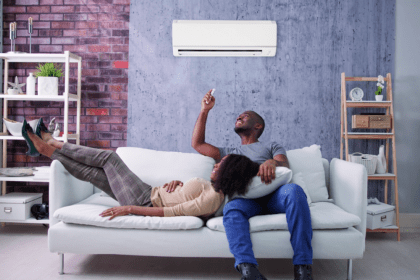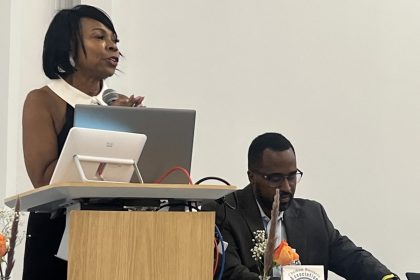Black Americans are facing disproportionate financial pressure from escalating utility costs, according to new research that highlights growing economic disparities in essential services. A comprehensive survey reveals that 59% of Black respondents report feeling overwhelmed by rising utility expenses, compared to 54% of Americans overall.
This disparity becomes particularly concerning as summer approaches, with 47% of Black Americans expressing specific worry about affording their electric bills during peak cooling months, significantly higher than the 42% national average. These findings underscore a growing economic challenge that intersects with broader issues of housing quality, income inequality, and geographic disadvantage.
The mounting financial pressure of essential services
The financial burden of utility costs for Black households has reached alarming levels. The survey, which included over 1,000 participants with approximately 26% identifying as Black Americans, found that Black households pay an average monthly utility bill of $653, a striking $180 more than the national average of $473.
Nearly 90% of those surveyed reported increases in their utility costs over the past year, creating substantial strain on household budgets already stretched thin by inflation and other rising expenses. These escalating costs are forcing difficult financial decisions, with 35% of Black respondents reporting struggles to pay their utility bills on time.
The trend shows no signs of reversing, as external factors continue to push prices upward. Recent policy decisions, including tariffs on electricity imports from Canada and Mexico, are expected to further increase energy costs, particularly in Midwestern states with significant Black populations.
Multiple factors driving the utility cost gap
The disparity in utility costs stems from several interconnected factors that disproportionately affect Black communities. Housing stock in many predominantly Black neighborhoods tends to be older and less energy-efficient, with inadequate insulation, outdated appliances, and less efficient heating and cooling systems that consume more energy.
Geographic factors also play a significant role, as distribution infrastructure and regional energy markets can create pricing variations between neighborhoods. According to the survey, 68% of Black respondents don’t understand the reasons behind recent rate hikes, highlighting a transparency gap in utility pricing that compounds the financial challenges.
Isaac Sevier, executive director of Public Grids, notes that approximately 52 million Americans already struggle to pay their energy bills, and new tariffs will only exacerbate this affordability crisis for vulnerable communities.
Black households leading in adoption of sustainable solutions
Despite these challenges, Black Americans are demonstrating remarkable resilience and innovation in addressing rising utility costs. The survey revealed that 33% of Black respondents are investing in solar panel installations, nearly double the rate of the general population, showcasing a strong commitment to sustainable energy solutions despite financial constraints.
Additionally, 82% of Black respondents support nationalizing the electric grid to stabilize prices, indicating a recognition that systemic solutions may be necessary to address the deep inequities in energy pricing and distribution.
7 practical strategies to reduce utility expenses
Energy experts recommend these proven approaches to managing rising utility costs:
Conduct regular bill audits: While 63% of Americans review their utility bills, only about 25% actually dispute charges when discrepancies appear. Those who do challenge questionable charges report an average savings of $433 from corrected billing errors. Consumers should carefully examine each bill, comparing current charges against historical usage patterns and questioning unexpected increases.
Optimize heating and cooling efficiency: Climate control represents nearly half of household energy consumption. Adjusting thermostats by 7-10°F for eight hours daily (while at work or sleeping) can reduce energy costs by up to 10%. Smart thermostats that automatically adjust based on occupancy patterns offer additional savings for households with variable schedules.
Transition to LED lighting technology: Traditional incandescent bulbs convert only 10% of energy into light, wasting the remaining 90% as heat. LED alternatives use approximately six times less power while lasting significantly longer. A complete household transition to LED lighting can yield annual savings between $75 and $145 depending on home size.
Replace inefficient appliances: Appliances manufactured before 2012 typically consume substantially more energy than newer models. Refrigerators, washers, and dryers over a decade old may be costing hundreds in unnecessary energy expenses annually. Energy Star certified replacements often pay for themselves within 3-5 years through reduced utility costs.
Eliminate phantom power consumption: Many electronics continue drawing power even when not actively used, a phenomenon called “phantom” or “vampire” power. This hidden consumption can account for up to 10% of residential electricity use. Unplugging devices or using power strips with switches can eliminate this unnecessary expense.
Modify water heating practices: Hot water generation represents a significant portion of utility costs. Reducing shower duration by just two minutes can save 150 gallons monthly for a family of four. Installing low-flow showerheads further decreases hot water consumption without sacrificing water pressure.
Adjust laundry habits: Washing clothes in cold or warm water instead of hot can reduce the energy used per load by approximately 50%. Additionally, air-drying heavier items reduces dryer usage, which ranks among the most energy-intensive household appliances.
Community initiatives providing additional support
Beyond individual household strategies, community-based initiatives are emerging to address utility affordability challenges. Energy assistance programs specifically targeting underserved neighborhoods provide financial support for utility bills and energy-efficient upgrades.
Weatherization assistance programs offer free or reduced-cost improvements like additional insulation, window sealing, and HVAC system upgrades that can dramatically reduce energy consumption. These programs often prioritize seniors, families with children, and households below certain income thresholds.
Community solar projects represent another promising approach, allowing residents to benefit from renewable energy without requiring individual rooftop installations. These shared systems can provide electricity bill credits to participants, reducing monthly costs while supporting clean energy development.
Systemic solutions needed
While individual cost-saving measures provide immediate relief, addressing the root causes of utility cost disparities requires broader policy changes. Improved regulations around utility pricing transparency would help consumers better understand their bills and identify potential savings opportunities.
Expanded investment in energy infrastructure serving historically disadvantaged communities could reduce distribution inefficiencies that contribute to higher costs. Meanwhile, targeted incentives for energy-efficient home improvements in older housing stock could address one of the fundamental drivers of higher utility bills in Black communities.
As utility costs continue rising nationwide, implementing both individual strategies and systemic changes will be essential to ensure all Americans can afford these basic necessities without sacrificing other critical needs. For Black households facing disproportionate energy burdens, combining immediate cost-saving measures with advocacy for equitable energy policies offers the most promising path forward.
By implementing these practical strategies while supporting broader systemic changes, Black households can gain greater control over their utility expenses even as market forces and policy decisions continue driving costs upward.













